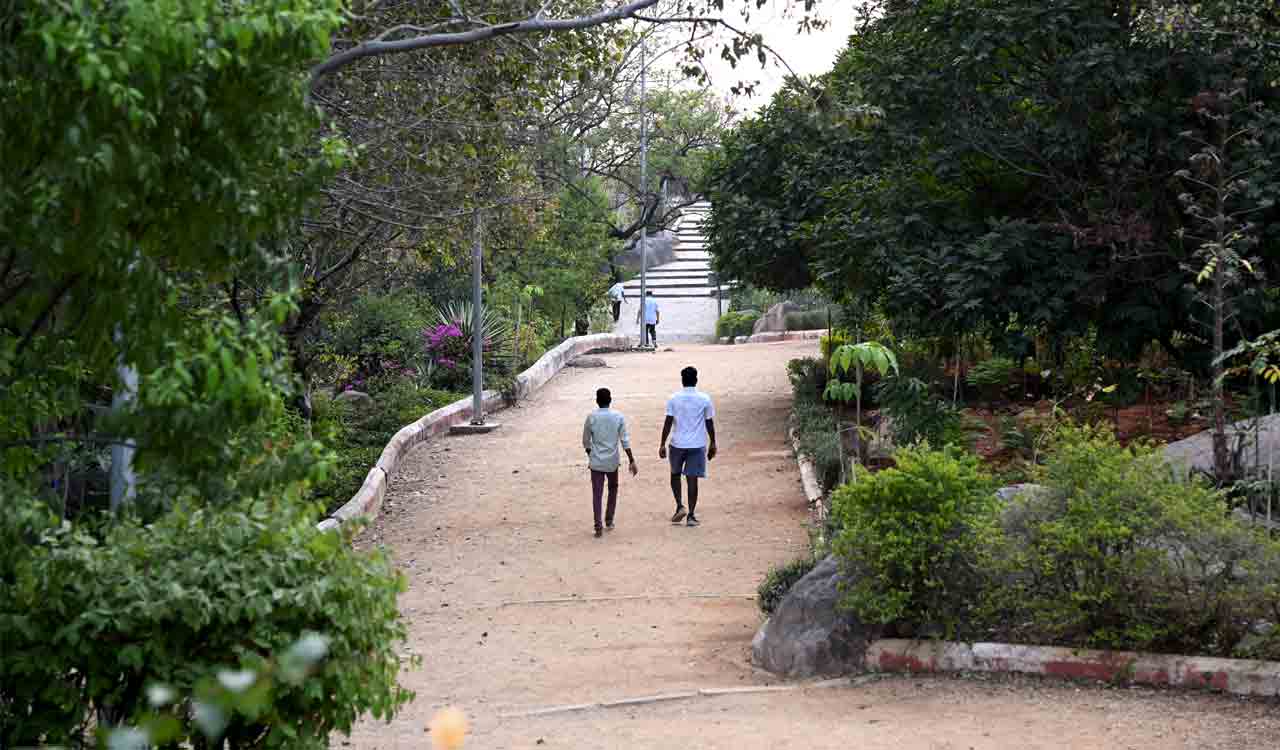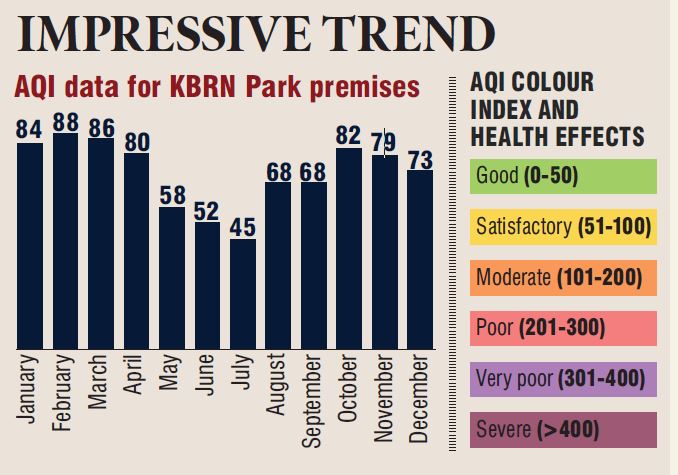According to the TSPCB’s comprehensive analysis of air quality across various locations in Hyderabad, KBRN Park, with its lush greenery, boasted the lowest average Air Quality Index (AQI) throughout the year, standing commendably at 71.25
Published Date – 21 February 2024, 11:30 PM

August last year witnessed a particularly remarkable period for KBR Park, with the average AQI
plummeting to an impressive 45, marking it a standout month. — Photo: Surya Sridhar.
Hyderabad: In the bustling urban landscape of Hyderabad, where pollution often chokes the air, there’s a green oasis that stands out for its remarkable air quality. Kasu Brahmananda Reddy National Park, nestled in Jubilee Hills, has emerged as the most breathable area in 2023 compared to other localities in the city, as per data released by the Telangana State Pollution Control Board (TSPCB).
According to the TSPCB’s comprehensive analysis of air quality across various locations in Hyderabad, KBRN Park, with its lush greenery, boasted the lowest average Air Quality Index (AQI) throughout the year, standing commendably at 71.25.
The month of August 2023 witnessed a particularly remarkable period for KBRN Park, with the average AQI plummeting to an impressive 45, marking it as a standout month in terms of air quality.
While the AQI level experienced a slight increase in February, reaching an average of 88, indicating a temporary degradation in air quality compared to the previous months, it dipped again in March, with an average AQI of 86.
In stark contrast to KBRN Park’s pristine air quality, other areas within the city showcased significantly higher average AQI values throughout 2023, indicating poorer air quality. For instance, areas like Charminar, Jeedimetla, and Balanagar recorded notably higher average AQI values, causing breathing discomfort to individuals with lung conditions, asthma, and heart disease.
Charminar exhibited the poorest air quality in the city in 2023, with an average AQI of 107.27, closely followed by Jeedimetla at 105.42, and Balanagar at 97.67.
With AQI levels ranging from “Good” to “Severe,” each category signifies different degrees of impact on human health. While “Good” air quality poses minimal risk to health, “Severe” levels can severely impact both healthy individuals and those with existing diseases, leading to respiratory illnesses.



